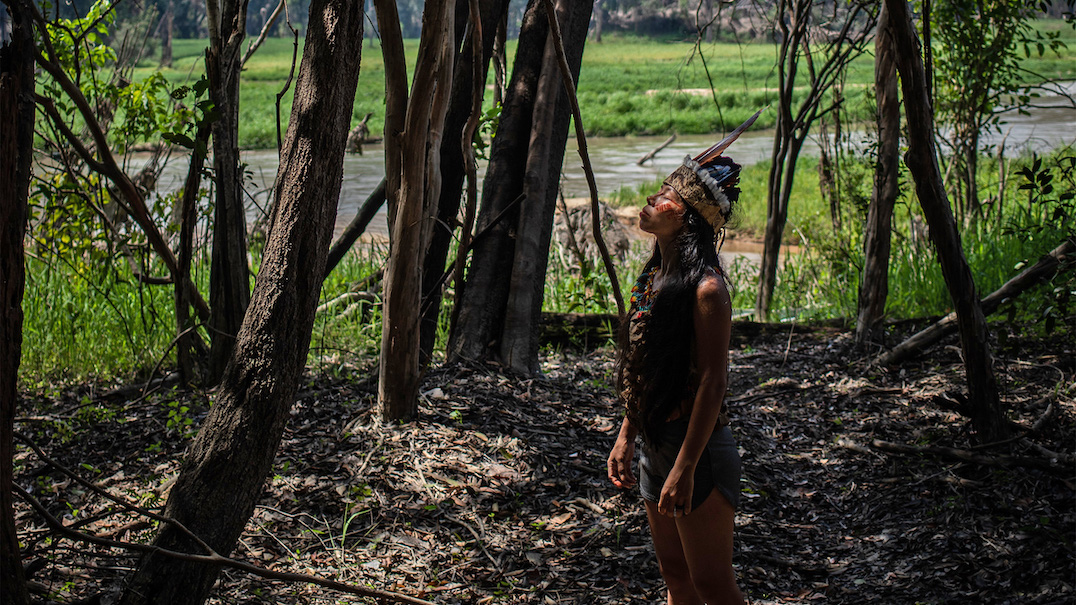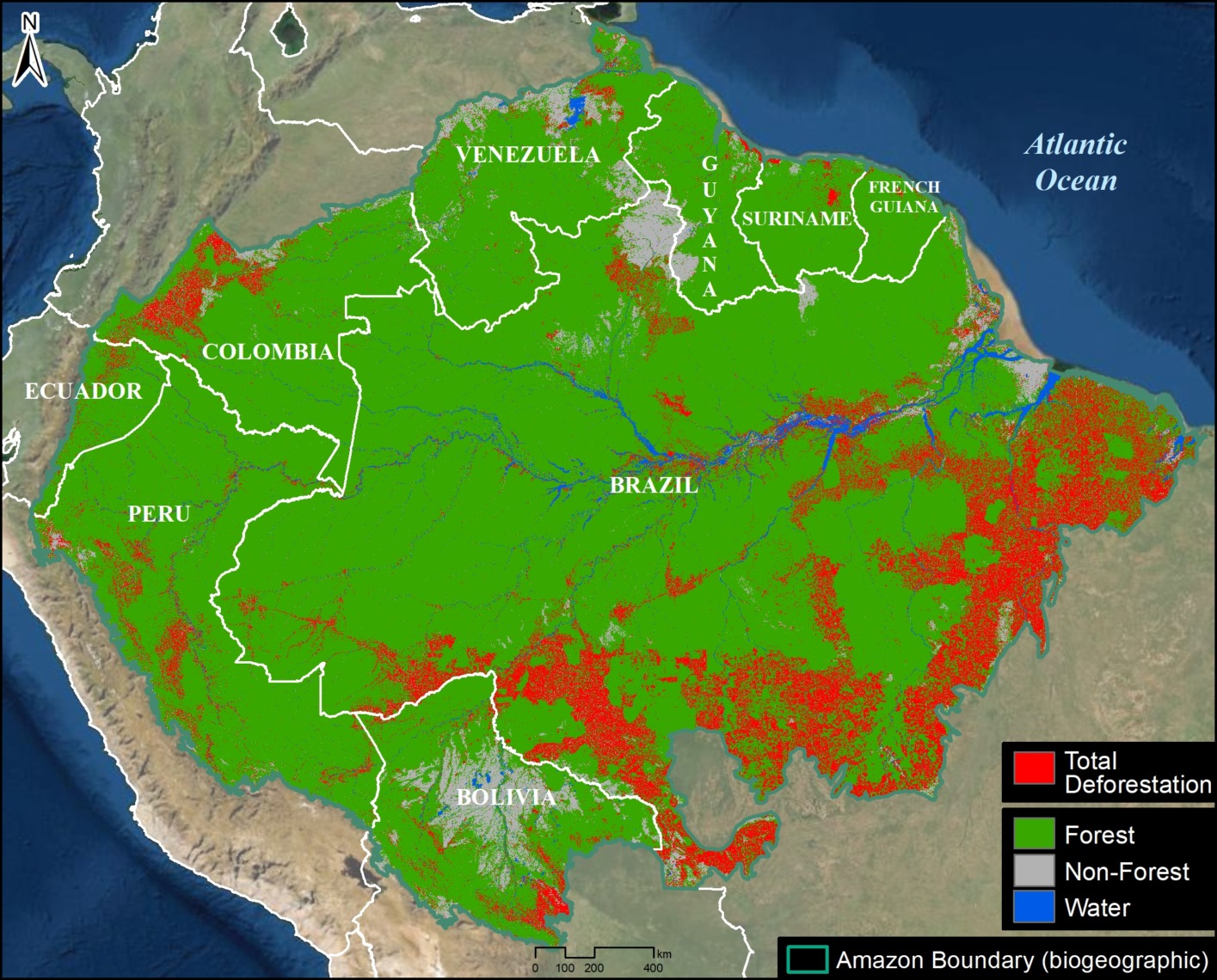Indigenous land rights key to curbing deforestation and restoring lands: Study

- Indigenous communities with land rights in Brazil’s Amazon not only curb deforestation, but better restore deforested land in their territories than the privately owned and unincorporated lands around them.
- Secondary forest coverage on previously deforested lands grew 5% inside Indigenous territories with tenure over the 33-year research period. This is 23% more growth than directly outside their borders.
- Secondary forests are around two years older on average inside Indigenous territories than outside their borders.
- Some scientists worry that reforestation research and policies are distracting from a much larger issue in the Amazon: the deforestation of old-growth forests. But these authors say policies that support Indigenous land rights can help stop deforestation and restore forests.
Indigenous territories with secure land rights not only reduce deforestation inside their lands in the Brazilian Amazon, but also lead to higher secondary forest growth on previously deforested areas, says a new study.
This new report, published in The Proceedings of the National Academy of Sciences, is off the back of multiple studies in recent years pointing to the efficiency of Indigenous forest conservation in Brazil’s Amazon once their territories gain full recognition by the government. According to the report, these territories support higher rates of secondary forest growth than the privately owned and unincorporated lands around them.
The secondary forests that grow back after clearing of original old-growth help revive biodiversity and capture carbon, combating climate change. Regenerated forests, also known as secondary forests, attempt to mimic the old-growth forest that was once there and act as carbon sinks, explains environmental and natural resource economist Nilesh Shinde, a postdoc at the University of Massachusetts Amherst and a co-author on the paper.
“Granting tenure to these Indigenous lands in Brazil is not only a really good human rights policy, but it’s actually a great environmental policy as well,” says political scientist Kathryn Baragwanath, now at the Australian Catholic University in Melbourne, Australia, and lead author of the study.
Land tenure prevents outsiders from entering territories for logging, mining, setting up crop pastures and land-grabbing, and it protects Indigenous traditional ways of life largely based on forest stewardship. Studies show this form of land protection contains some of the most healthy forests with only 1.6% of deforestation in Brazil from 1990 to 2020 occurring on these protected Indigenous lands.


Researchers found that secondary forest coverage on previously deforested lands grew 5% inside Indigenous territories with tenure over the 33-year research period. This is 23% more growth than directly outside their borders.
They also found that forests inside fully recognized Indigenous community borders were around two years older on average, which the authors attribute to forests being more likely to grow back and less likely to be cut down after recovering inside Indigenous territories.
The authors used remote satellite data from 1986 to 2019 to observe the proportional growth of secondary forest coverage inside and outside of 377 Indigenous territories. Some of these Indigenous territories received tenure within the study window, while others have yet to, allowing the authors to compare before, after or without tenure.
The study excluded protected areas from its scope, focusing on comparing Indigenous management with private and unincorporated lands. Baragwanath says she and co-author Ella Bayi, a Ph.D. student at Columbia University, are now working on comparing secondary forests on Indigenous territories with other types of protected areas in Brazil. Protected areas in Brazil have a comparable deforestation rate to Indigenous territories.

To restore deforested lands, many Indigenous communities tend to take on a holistic approach. The authors provide the example of Rede Sementes do Xingu, a grassroots organization led by Indigenous peoples and local family farmers. Their mission is to promote the restoration of the Amazon through the preservation and distribution of diverse native seeds while honoring the autonomy of Indigenous peoples. They have recovered more than 7,000 hectares (17,297 acres), planting 25 million trees and providing nearly $7 million in income to seed collectors in the local communities.
After 40 years, secondary forests can recover an average of 88% of their species richness, according to a 2018 study in Global Change Biology. As they generate new growth, they can also capture up to 11 times more carbon than old-growth forests, according to a 2016 study in Nature. But, a 2020 study in Ecology found that secondary forests in Brazil uptake only about twice as much as primary forests. It also takes time for secondary forests to grow and meet old-growth forests’ carbon capture capabilities.
Despite carbon uncertainties, regenerating the forest provides benefits to the ecosystem and global climate and also to the local communities who rely on it, says Shinde.
In 2015, the Brazilian government pledged to restore 12 million ha (about 30 million acres) of native vegetation in the Amazon by 2030 as part of the Paris Agreement. But under former President Jair Bolsonaro, deforestation rose by nearly 60%. The lush lands of the Amazon are in high demand for cattle ranching and soy plantations, largely encouraged by Bolsonaro and pro-agribusiness lawmakers, leading to the clearing of forests. In 2022, scientists estimated that more than 13% of the Amazon’s original old-growth forest was gone, a chunk of land bigger than double the size of California.

Now, Brazil’s new president, Luiz Inácio Lula da Silva, promised to restore environmental policies, forests destroyed in recent years and the Paris Agreement reforestation goals.
But, “Not all trees are equal,” says Shinde. Plantations with expanses of single native species used for agriculture, like oil palm, also count toward reforestation goals. But their benefits can’t compare to secondary forests, which attempt to mimic the diverse old-growth trees once there, says Shinde.
The authors hope their findings can drive policies that encourage the tenure of Indigenous territories in Amazonia. “If Brazil wants to reach its climate goals, these are actually really good policies to pursue,” says Baragwanath. At the moment, there are 726 Indigenous territories in Brazil covering 23% of Brazil’s swath of the Amazon, while 487 are tenured. President Lula says he is committed to recognizing more territories during his administration.
But some argue that secondary forests are taking too much of the limelight. The study’s emphasis on secondary forests neglects the real issue at hand in the Amazon: stopping deforestation, says biologist Philip Fearnside, head researcher at the National Institute for Amazonian Research who was not involved in this study.
“This restoration in different deforested areas is a glorified detour,” says Fearnside. “You’re doing something but not actually facing the deforestation problem.” But, he says, reforestation is a more appealing solution than protecting the old-growth forest still there.
“If you restore a few hectares of forests, you can go and make a video clip of trees with smiling children and so forth,” argues Fearnside. “You have something to show, whereas if you’ve done something that changed the policy that has produced deforestation somewhere you don’t have anything concrete to go and show for it.”

Baragwanath agrees that deforestation should be the first and foremost concern, pointing to her 2020 publication on the value of Indigenous territories in preventing deforestation. But she says this recent study, among others, shows the important role secondary forests also play.
“If you can enact one policy that does both things at the same time, that’s even better than doing a policy that only does one thing,” says Baragwanath. “What we’re doing in the second paper is actually measuring even other positive effects of granting tenure, which hasn’t been considered before, but actually are quite sizable as well.”
Shinde also agrees that deforestation is a top concern and that restoration and stopping deforestation can go “hand in hand.” “Even small patches of secondary forests can help combat climate change and improve biodiversity,” says Shinde, referencing this 2019 study in Global Change Biology.
“But I totally agree that if you were a policymaker, and you had a budget, you would 100% first want to focus on policies that target deforestation,” says Baragwanath.